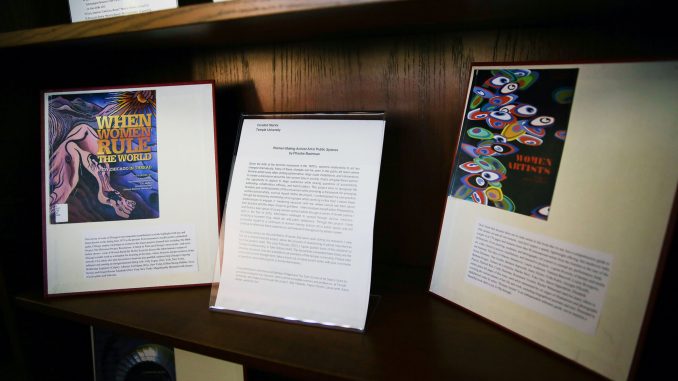
Tyler sculpting major Phoebe Bachman never expected that her research project would take her to places like Los Angeles and New York City. But when it did, she took the opportunity and ran with it.
Before the project garnered success, it was sparked from an interest to know more about other artists and their stories.
“As a young female artist myself, I was interested in what my history looks like,” Bachman said. “I started interviews with female artists because of that, and I also wanted to see how those women portray themselves in this larger history.”
Last summer, Bachman received the Diamond Research Scholarship Grant to be able to further her research. She decided to entitle the project, “Women Making Activist Art in Public Spaces.”
From the interviews she conducted, she discovered one female artist in particular – Suzanne Lacy – who Bachman said changed the course of the entire project.
“I was introduced to [Lacy] from one of my professors, Billy Yalowitz,” she said. “I became really interested in how her activism and art came together.”
She said her meetings with Lacy opened her eyes to a whole new world of what it means to be a woman using art as a form of activism.
Lacy’s method of basing her work around conversations and the process of getting those conversations to happen was appealing to her.
“It made me much more fascinated with the feminist movement of the ‘70s, when [Lacy] started making her work,” Bachman said. “It was a big time for women and feminism in general.”
One meeting with Lacy soon turned into two and then three, but Bachman said these were more of a learning experience than a Q&A session.
“It was important to me to consider the interviews I did with women more than just research,” she said. “They were mentoring sessions.”
After talking with Lacy and other female artist activists, she was able to present her findings to the rest of the Temple community.
“On Feb. 4, I gave a presentation of my work in the Temple Contemporary Gallery,” Bachman said. “After that, I began talking to Jill Luedke, the art librarian in Paley, when she told me her idea of having a Curated Stacks series.”
Bachman’s exhibit had a two-week installation in the gallery, but while speaking with Luedke, the two made the decision to present her work in yet another way.
“I told [Luedke] that I was using this library cart in my presentation. Every time I talked about a work of art, I would pull out the book I found it from,” she said. “We started throwing out a bunch of ideas about having this visual bibliography.”
She started to create this “visual bibliography” in hopes of getting her ideas and research out to a wider audience.
“I wanted to disseminate it and get people thinking, because people tend to pick up where others leave off,” Bachman said. “I was really interested in how other people would take it.”
Bachman said both Temple students and staff have responded well to the presentation. Her mother, a librarian at Swarthmore College, has even heard from people who have taken a look at the exhibit.
“My mom has gotten emails from librarians at Temple, and a lot of people seem to be really excited about it,” she said. “I had people in the library coming up to me asking about it, but I think the true test of its success is that people are now checking out those books that have otherwise been sitting on the shelves for years.”
As the first presenter in the Curated Stacks series, Bachman and other members of the Tyler community are hoping that other students will follow in her footsteps.
“I think the Curated Stacks are a brilliant idea,” said Jude Tallichet, a sculpting professor at Tyler. “Right now there is a whole movement of art [education] research.”
Tallichet also said that this new advent of research has changed the way she, and other teachers, are dealing with assigning these types of projects to students.
“Art isn’t just self-expression anymore,” she said. “It is how you work with the world and a lot of that involves research. I think a lot of us are giving research projects to our students, whereas years ago we would not have.”
Bachman said it’s rewarding that the project has truly come full circle.
“After working with Lacy over the summer, the public arts nonprofit Creative Time was able to offer me the chance to work with them in New York City,” she said. “When I first started this project, I was doing research on Creative Time, and they are very influential in the public arts scene. Hopefully one day I will be one of the artists they are working with.”
Alexa Bricker can be reached at alexa.bricker@temple.edu.


Be the first to comment